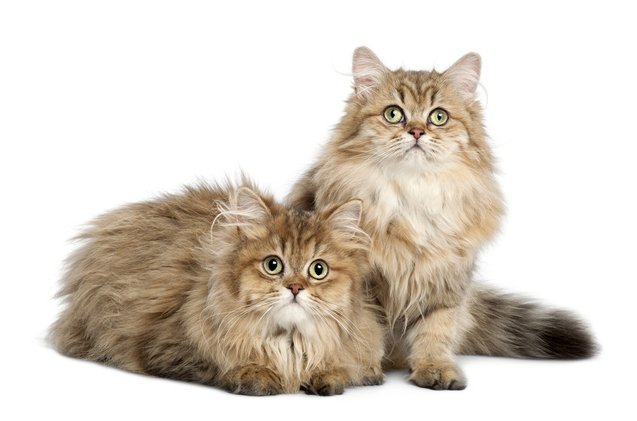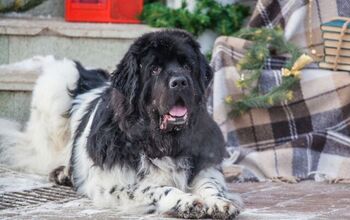British Longhair


About British Longhair
The British Longhair is essentially the British Shorthair with longer fur, but it is considered a newer breed.
Between 1914 and 1918, cat lovers started crossing British Shorthair cats with Persians, thereby creating the British Longhair breed, showcasing all of the unique coat features of a Persian and the temperament of a British Shorthair.
So, if you are familiar with either, or both, the British Shorthair and Persian, you can get a good idea of what a British Longhair cat is like in terms of their appearance and personality. Of course, it goes without saying that every animal is one-of-a-kind, with their own unique preferences in addition to their general needs. But, if you have interacted with the breeds that led to the British Longhair, and you really enjoyed the company of those kitties, a British Longhair might be the perfect combination of the two. At that point, it would just be a matter of finding a reputable breeder or a British Longhair rescue to bring one into your family.
The British Longhair is essentially the British Shorthair with longer fur.
Like the British Shorthair, British Longhair cats have a pleasant temperament, and they are affectionate and easygoing.
These cats are also quite tolerant, adaptable, and friendly, though they tend to be a bit less active as adults when compared to other breeds. This makes them a good breed to consider if you aren’t too keen on the idea of having a highly energetic kitty in your home. If you’re looking for a more laid-back feline companion, the British Longhair might be the right fit.
Because they are less active, it is important to encourage playtime and exercise, while also monitoring how much you feed these kitties, as they are prone to becoming overweight. It’s a good idea to talk to a veterinarian if you aren’t sure about the best foods to feed your cat or if your British Longhair does gain too much weight and needs to lose a few pounds to get into a healthier state.
What makes these cats perfect for any feline loving household – particularly those households in which the owners have to spend a lot of time away from home while working – is the fact that they won’t be loud in order to get your attention, and they are content amusing themselves to avoid becoming bored. If you have more than one British Longhair, or more than one cat in general, even if they are different breeds, they can keep each other company when you aren’t able to interact because you’re busy or when you aren’t home. In addition to considering adding to your feline family, you can also give your British Longhair plenty of toys to play with (just be sure that the toys are safe for solitary play). Cat trees, wall perches, and window perches can also help keep your cats occupied and reduce the risk of boredom when they’re home alone.
Despite having a somewhat independent nature, however, these cats do enjoy being petted and cuddled, and they need the company of people and other cats or pets. Therefore, you do have to be certain you can make time for them. If you think your schedule will be too full or too hectic to be able to spend time with your pet, it’s important to consider the animal’s needs and whether or not you would be able to give them what they want to be happy.
The British Longhair’s unique features make it a lovely cat to look at. It is a medium-sized breed that has a short, muscular back and a wide chest. These cats also have solid round feet, along with legs that are straight and short. And they have a thick tail that can be medium or short in length.
Another feature of this breed is the round head and full cheeks, as well as the wide skull and thick, short, muscular neck. The ears on these cats are small and short, with a broad base. And the eyes are large and round, coming in different colors, including blue, green, deep gold, and copper, depending upon the coat color and pattern. This makes them super adorable and you can’t help but take note of their attractive appearance.
Like the British Shorthair, the British Longhair comes in a variety of colors and patterns. While blue is the most popular color, other patterns and colors include black, white, cream, tabby, calico, bi-color, and tortoiseshell.
As mentioned above, in addition to coming in a range of coat colors, British Longhair kitties also boast a range of gorgeous eye colors. So, overall, these cats are quite striking in appearance, especially when you factor in their luxuriously long coat.
If you have been doing your research into the many different feline breeds that are out there, you likely already know that longhaired kitties tend to be a bit harder to care for when it comes to helping them maintain a healthy, soft, and smooth coat that is free of mats and tangles. Well, that is certainly the case with the British Longhair.
To keep a British Longhair looking great, you need to brush your cat at least weekly using a bristle brush, but you don’t really need to worry about actually bathing your cat, as he will take care of that on his own. Using high-quality brushes and combs that are designed for use on cats is a good way to ensure you will be able to get the best results in the shortest amount of time. And you definitely want your kitty to enjoy the experience of being brushed, so it shouldn’t hurt your pet at all. In fact, regularly brushing your cat can help strengthen your bond with your furry friend.
Increase the frequency of your brushing during seasons when your pet sheds more than usual. The brushing will help prevent tangles and matting, while keeping the skin and fur in the healthiest condition. Plus, this simple routine can also help remove loose hair that would otherwise end up all over your house and clothes. Basically, because brushing can help prevent hairballs and will assist in curbing excess shedding, it can provide benefits to both you and your cat.
Photo credit: Life on White

Lisa Selvaggio is a freelance writer and editor, and our resident cats-pert, with certifications in pet nutrition and pet first aid. She enjoys producing content that helps people understand animals better so they can give their pets a safe and happy home.
More by Lisa Selvaggio

























